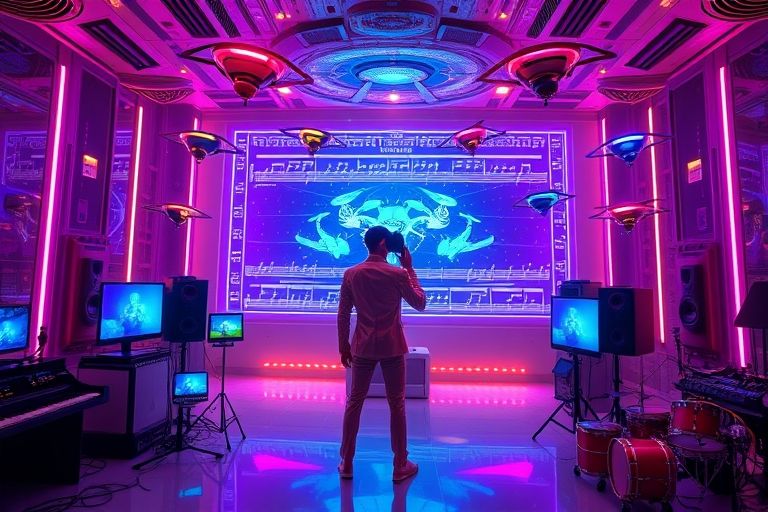Revolutionizing Music Creation: AI-Driven Innovations and Tools
The music industry has always been competitive, with every artist striving to produce unique and captivating music that resonates with their audience. However, with advancements in technology, Artificial Intelligence (AI) has emerged as a game-changer in music creation. AI-driven innovations and tools are transforming the way music is produced, and the impact is significant.
Examples of AI-Driven Innovations
AI-driven innovations in music creation are becoming increasingly popular, and several tools have been developed to aid in the music-making process. Here are some examples of AI-driven innovations:
- Magenta: This is an open-source research project that uses machine learning to create music and art. Magenta has produced several AI models, including the NSynth algorithm, which enables the creation of new sounds by mixing existing ones.
- AIVA: This is an AI-powered music composer that can generate original compositions in various genres. AIVA has been used to create music for films, commercials, and video games.
- Amper Music: This tool uses AI to produce original music tracks based on the user's specifications. Users can choose the genre, mood, and tempo of the music they want to create.
How to Use AI-Driven Innovations in Music Creation
Using AI-driven innovations in music creation can be intimidating, especially for those who are not familiar with technology. However, these tools are user-friendly and require minimal technical expertise. Here are some steps to follow when using AI-driven innovations in music creation:
- Choose an AI-driven tool that suits your needs. There are several options available, so take time to research and find one that fits your music creation goals.
- Input your specifications. Depending on the tool you choose, you may be required to input your preferred genre, mood, tempo, and other details. Be as specific as possible to get the best results.
- Review the output. Once you have input your specifications, the tool will generate an output. Review the output and make any necessary adjustments. You can do this by tweaking the parameters or providing feedback to the tool.
- Export your music. After you are satisfied with the output, you can export your music in various formats, including MIDI, WAV, and MP3.
Statistics and Facts
The impact of AI-driven innovations in music creation is significant, and the numbers speak for themselves. Here are some statistics and facts:
- The global music production software market size is expected to reach $6.26 billion by 2026, with a CAGR of 9.1% from 2020 to 2026.
- In 2020, Amper Music raised $4 million in seed funding to develop its AI-powered music composition tool further.
- According to a study by the Consumer Technology Association, 44% of US adults believe that AI will have a positive impact on music creation.
Conclusion
AI-driven innovations and tools are revolutionizing music creation, making it easier and more accessible for everyone. With several options available, artists can choose a tool that suits their needs and create unique and captivating music that resonates with their audience. As technology continues to advance, we can expect AI-driven innovations in music creation to become even more sophisticated and impactful.
